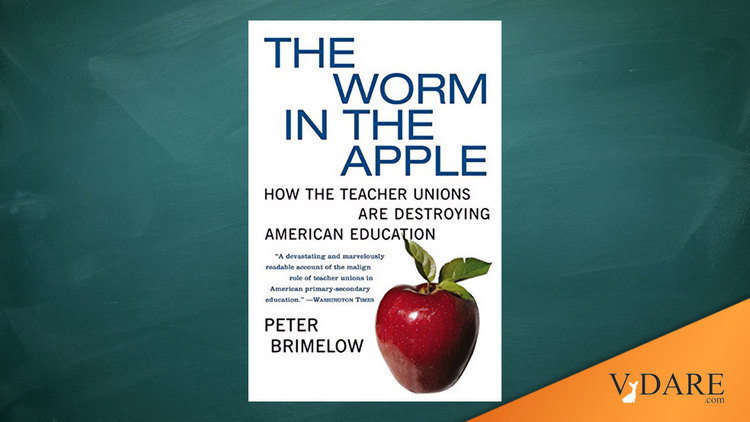


05/20/2003
May 20, 2003, Chicago Sun-Times
By John O’sullivan
Remember the bell curve? Well, here comes its even more terrifying successor — the bow tie.
Some years ago a Forbes columnist was compiling a chart for an article on education. The statistical relationship he uncovered in his research was so remarkable that it became an article in itself — or what the columnist called "a charticle." That is a chart that makes such a strong point that it requires very few words of additional explanation. Charticles duly became a regular feature in Forbes and later on CBS Marketwatch.
In this case the charticle consisted of two lines. One line, beginning at the lower left hand corner of the chart and rising diagonally to the upper right hand corner, represented national spending on education.
The other line, beginning at the upper left hand corner and descending diagonally to the lower right hand corner, described falling standards of educational performance as represented by SAT scores, etc.
Together the two lines, intersecting in the middle of the chart, formed an elegant bow tie pattern. But the inelegant truth they revealed was that America’s educational standards had not risen in line with rising expenditure on education — but had actually fallen.
Now, that was what the sociologists call a "counterintuitive" finding. After all, politicians constantly demand more spending on education — more schools, higher salaries for teachers, more books, special education programs, etc. — precisely in order to lift educational standards. Here was statistical evidence that higher spending was linked to worse schools.
Linked, yes. But was there a causal connection? Did higher spending actually bring about worse education? That was less clear. For in strict logic, a third factor might conceivably have caused both higher spending and worse schools. And the more the columnist looked at the evidence, the more he was convinced that there was such a Factor X.
The columnist in question was Peter Brimelow (full disclosure here, he is an old friend and a former colleague on National Review magazine.) The fruit of his researches is the book Worm in the Apple (Harper Collins, $24.95). And the Factor X is revealed in its subtitle: How the Teacher Unions Are Destroying American Education.
How so?
Teacher unions have the exclusive right to represent teachers and to negotiate teacher contracts with school boards in 90 percent of American schools.
To put this in economic terms, they enjoy a near-monopoly of teacher supply in the education market. This gives them enormous power to raise the price of teacher services — and in effect to divert spending from better education to better pay and conditions for their members.
In these circumstances even vastly improved inputs (i.e., much more money) lead not to higher outputs (i.e., better educated children) but to higher producer incomes, over-manning and falling productivity (i.e., more teachers doing less work for more money).
Thus, when the publication of A Nation At Risk stimulated a national educational panic, inflation-adjusted education spending rose 45 percent and pupil-teacher ratios fell from 22-1 to 16-1 — but the pupils' test results remained flat.
If the teacher union monopoly (or Teacher Trust, as Brimelow calls it) were the only worm in the apple, however, parents might simply move their children to other schools with higher standards. What makes than nearly impossible for most people is that the Teacher Trust is shored up by another monopoly — the public school education system itself.
Public schools charge people for educating their children even when they send them to private or parochial schools.
And since very few parents can afford to pay twice over for their children’s education (however passionately they feel about it), they are effectively compelled to use the public schools and to pay, through various forms of taxation, for the inflated salaries and low productivity negotiated by the Teacher Trust. And that has one further consequence: Since these parents cannot go elsewhere, they have no leverage to compel the public schools to raise their performance.
Overall, therefore, the education market, like all monopoly-dominated markets, is inefficient, uncompetitive and marked by low innovation, poor standards and high prices. Hence the bow tie.
Parents in the worst inner-city "sink schools" struggle to save their children from this mis-education by supporting various schemes for school choice — in particular, school vouchers. Until now, however, they have generally been defeated by a bizarre but understandable electoral alliance between the Teacher Trust and suburban parents.
Suburban parents — who have often spent large sums on housing so that their children can escape from a worse to a less worse education — are nervous that vouchers will mean an inner-city invasion of their treasured local schools.
Meanwhile, the teacher unions, in order to shore up their public school monopoly, spend vast sums on painting voucher advocates as dangerous "extremists" out to destroy public schools. These campaigns allow the suburban parents to vote on nearly racist grounds with a clear conscience.
And as was demonstrated by the congressional progress of the Bush education bill — which gradually shed its "reform" and voucher provisions and became simply more money for the Teacher Trust — this looks unlikely to change any time soon. Republicans are nervous that if they oppose the Teacher Trust or advocate even moderate forms of school choice, they too will morph into "extremists" come election time. What is needed for reform is public awareness of the bow tie.
And unfortunately for that, but fortunately for the teachers unions, one of Brimelow’s wittier predictions came almost true. Asked if he knew when the Iraq War would break out, he replied: "Sure. The day my book is published."